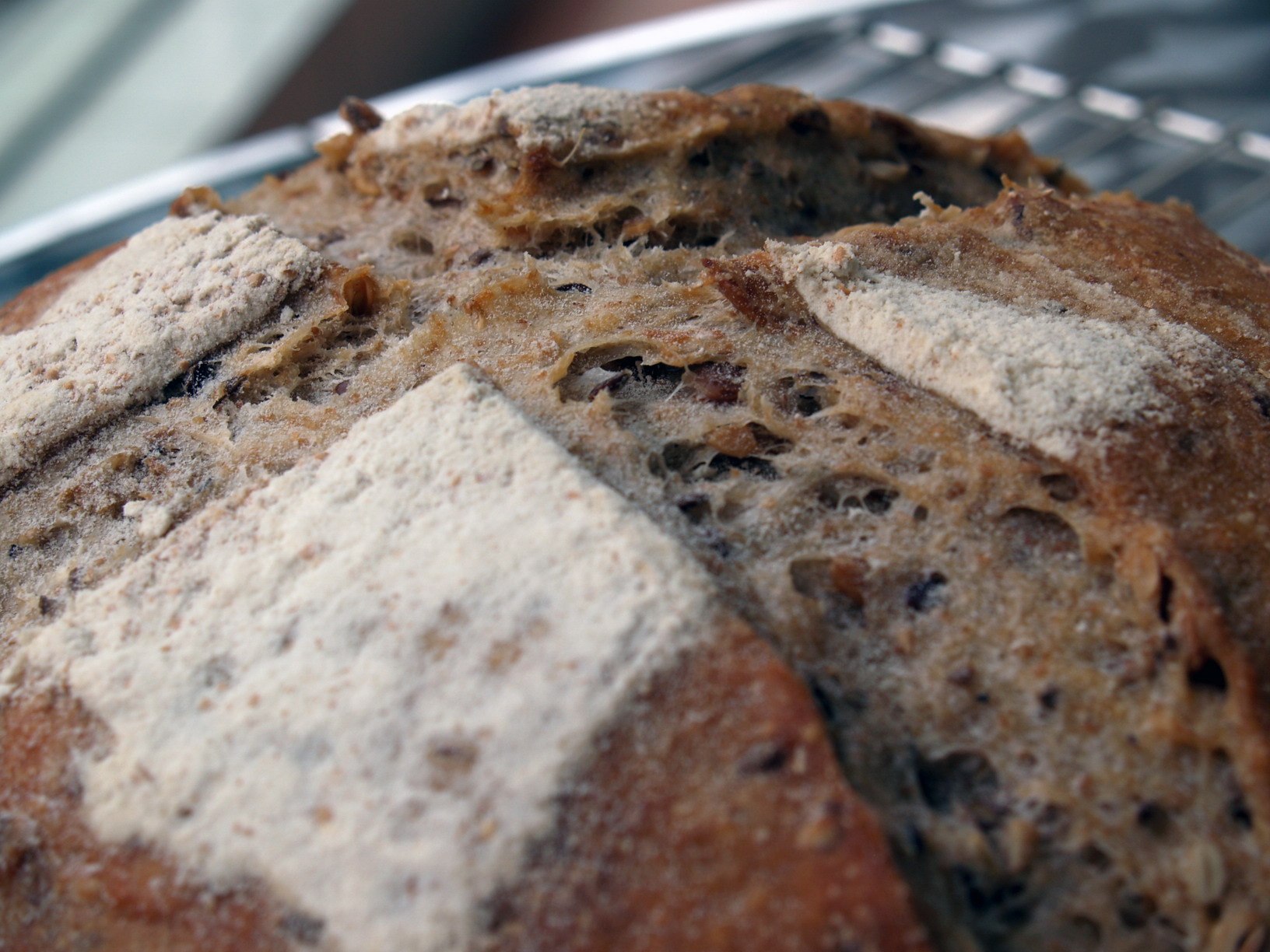Whilst cleaning out the coin container on my dresser in preparation for taking the coins to the supermarket to be counted, I found an unused gift card from Barnes & Noble. Had it been there 8 months? 20 months? Who can say; the question was - what to do with it?
What type of book to buy was not in question, but exactly which book was. I still don't have any of the first four Reinhart books (and would very much like American Pie), Leader has just released a new one, and there are other classics I don't have. Based on reviews and comments here I decided to get Reinhart's new Whole Grain Breads.
This is without question an excellent book. I have read some of the chapters and skimmed through the rest, and I would say it will take 4-5 thorough readings until I have absorbed everything Reinhart has to say. Which is bad, because I am still re-reading The Bread Builders and trying to absorb that. Reinhart has put together a lot of thoughts that I have been stumbling towards over the last year as I have tried to increase the fraction of whole grains in my bread (and other baked stuff), and it was interesting to see that the bibliography included many books (such as Bread Science) that have read in the last year, as well as a nod to this web site and its participants.
I decided to start out with the Transitional Country Hearth Loaf, as my family's preferences lean toward white(er) loaves.
Given that I had not yet read the Theory and Process of Delayed Fermentation chapters when I jumped ahead to the recipe, the steps were fairly straightforward for anyone who had made a RLB or Hammelman recipe. I tried to follow the recipe exactly to see if I would get the results from the book. One point that bothered me was where the sequence said "combine the soaker and biga pieces with all other ingredients". The "other ingredients" were 5g salt and 7g yeast; I was expecting some more water, flour, or something. But when I mixed it up the texture seemed right. One thing I did is carefully interweave the 12 pieces of biga and 12 pieces of soaker into a neat 3-layer pattern with the salt and yeast in between the layers. I have zero artistic ability but the weave looked neat (unfortunately I did not hae the camera at that point) and I was gratified the next day to find a similar picture in the opening chapters of the book.
Here is the proofed loaf on the peel, waiting to be slashed and go in the oven:
 sPh - Reinhart Transition Country Proofed Loaf
sPh - Reinhart Transition Country Proofed Loaf
Here is the baked loaf about to come out of the oven. Since I proofed it in the banneton I was not able to put semolina on the peel. I should have put some between the loaf and the end of the peel before sliding but did not, so the result was some ovalization of the loaf:
 sPh - Reinhart Transition Country Baked Loaf
sPh - Reinhart Transition Country Baked Loaf
This picture on the counter gives some indication of the size of the loaf with the thermapen in the background. Quite a bit of distortion from the wide angle lens though since the standard Corelle bowl in the backgorund looks small:
 sph - Reinhart Transition Country Baked Loaf on Counter
sph - Reinhart Transition Country Baked Loaf on Counter
Here is the "crust and crumb". I took this outside to get some strong light, which allowed a good handheld closeup. The crust was good; thick and chewy but not too tough or crunchy. The crumb was open and had a good taste but was a bit dry:
 sph - Reinhart Transition Country Crust and Crumb
sph - Reinhart Transition Country Crust and Crumb
And here is an end-on shot of the sliced loaf. Note that despite my careful layering of the soaker (darker) and biga (lighter), mixing, and a total of 7 minutes of kneading there are still clear areas of light and dark crumb:
 sph - Reinhart Transition Country End View Crumb
sph - Reinhart Transition Country End View Crumb
Conclusions? Overall this was a good bread, well-received by family and neighbors. As mentioned my family and I found it a bit dry. The published hydration is 65%; when I make it again I will try 70% or even 75. The taste was good with no bitterness and just a hint of "whole wheat" flavour; the crust was very good. Toasted with a little butter it was excellent. A good recipe and actually very easy to make.
sPh






 sPh - Reinhart Transition Country Proofed Loaf
sPh - Reinhart Transition Country Proofed Loaf sPh - Reinhart Transition Country Baked Loaf
sPh - Reinhart Transition Country Baked Loaf  sph - Reinhart Transition Country Baked Loaf on Counter
sph - Reinhart Transition Country Baked Loaf on Counter  sph - Reinhart Transition Country Crust and Crumb
sph - Reinhart Transition Country Crust and Crumb sph - Reinhart Transition Country End View Crumb
sph - Reinhart Transition Country End View Crumb